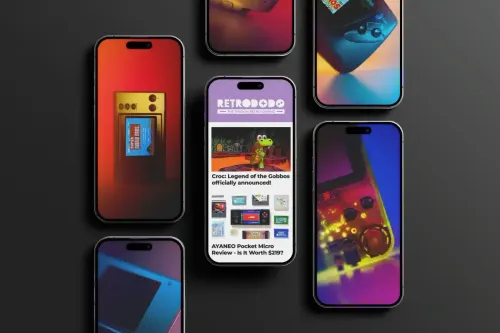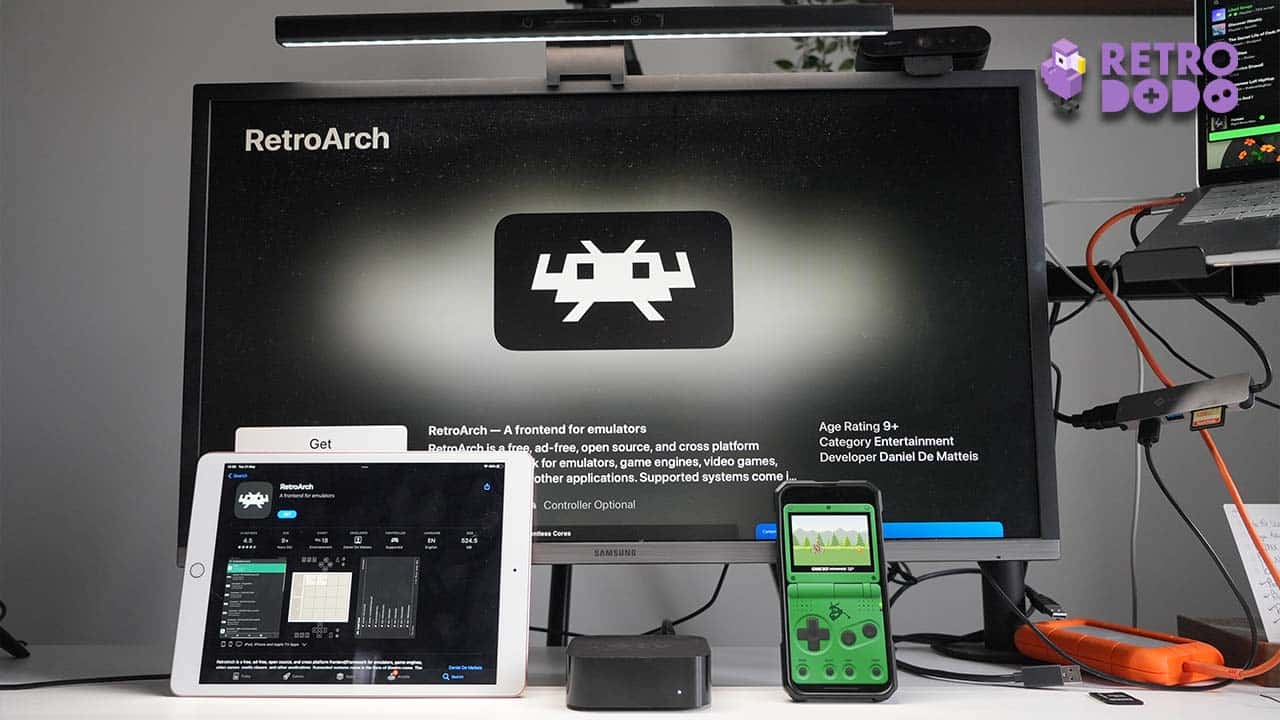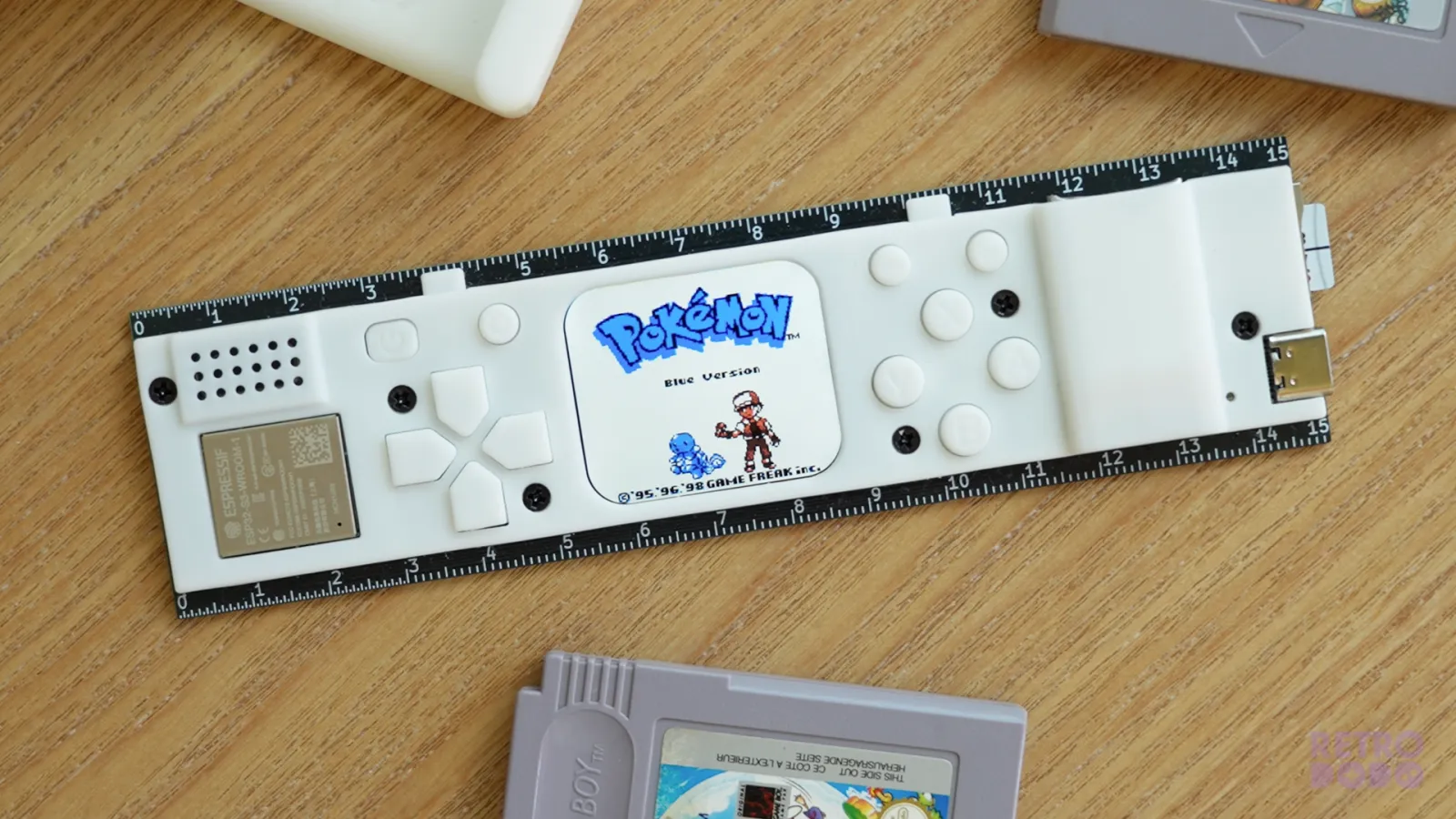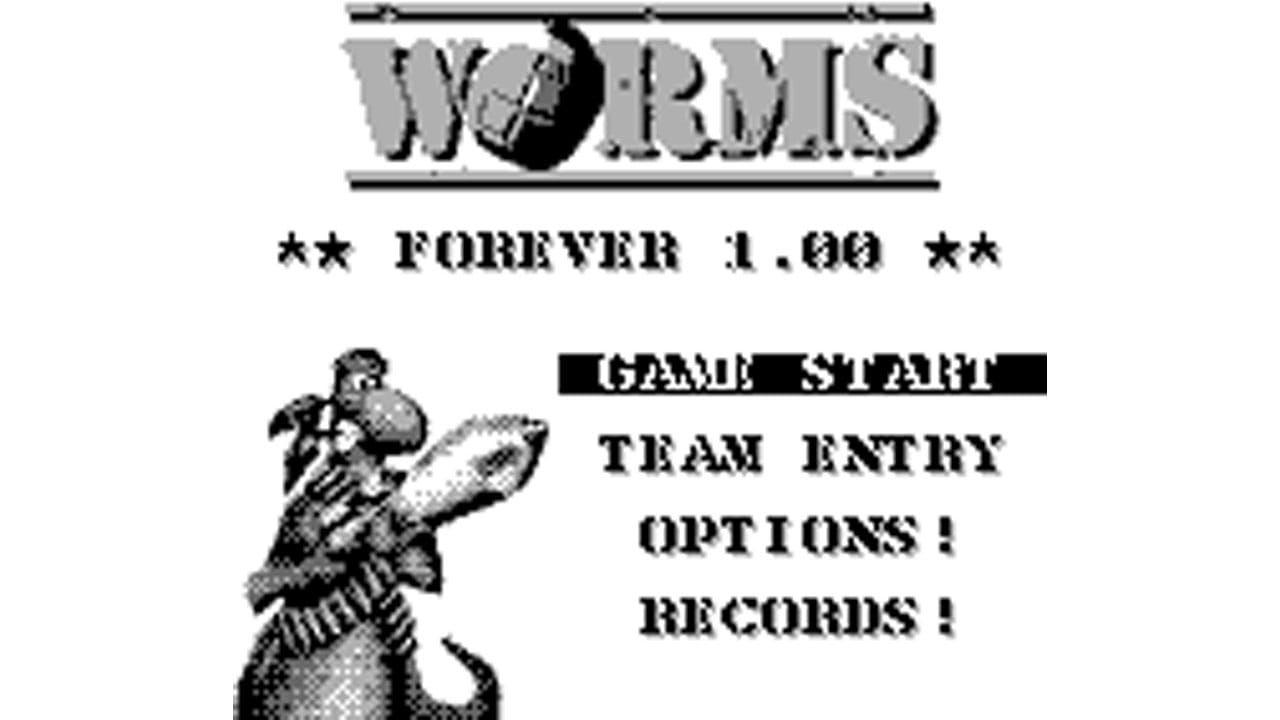If you’re an iPhone user, then like me, you’ve probably been spending a lot more time perusing the App Store than you have in a long while. After Apple finally changed its views and opened the App Store to emulators, we’ve received a steady stream of incredible apps heading to our Apple devices, allowing us to play retro and homebrew games both on the go and on our TV with ease.
We’ve been talking a lot about emulators recently, and I would imagine a lot of your other iPhone friends and colleagues have been showing you games on their phones and talking about Zip files, Airplay, and something called RetroArch too. It can feel like you’re listening to another language if you don’t understand what’s going on, but don’t worry, Retro Dodo has got your back.
I’ve created a beginner’s guide to iPhone, iPad, and Apple TV Emulators to give you everything you need to know about getting gaming on your phone, tablet, or TV. Whether you’re a complete novice or someone with some previous experience looking for the best new emulator to use with your iPhone, this guide will give you everything you need to know and hands-on knowledge about how the emulators work, as well as explaining all that technical jargon in an easy-to-understand way!
What Is Emulation?
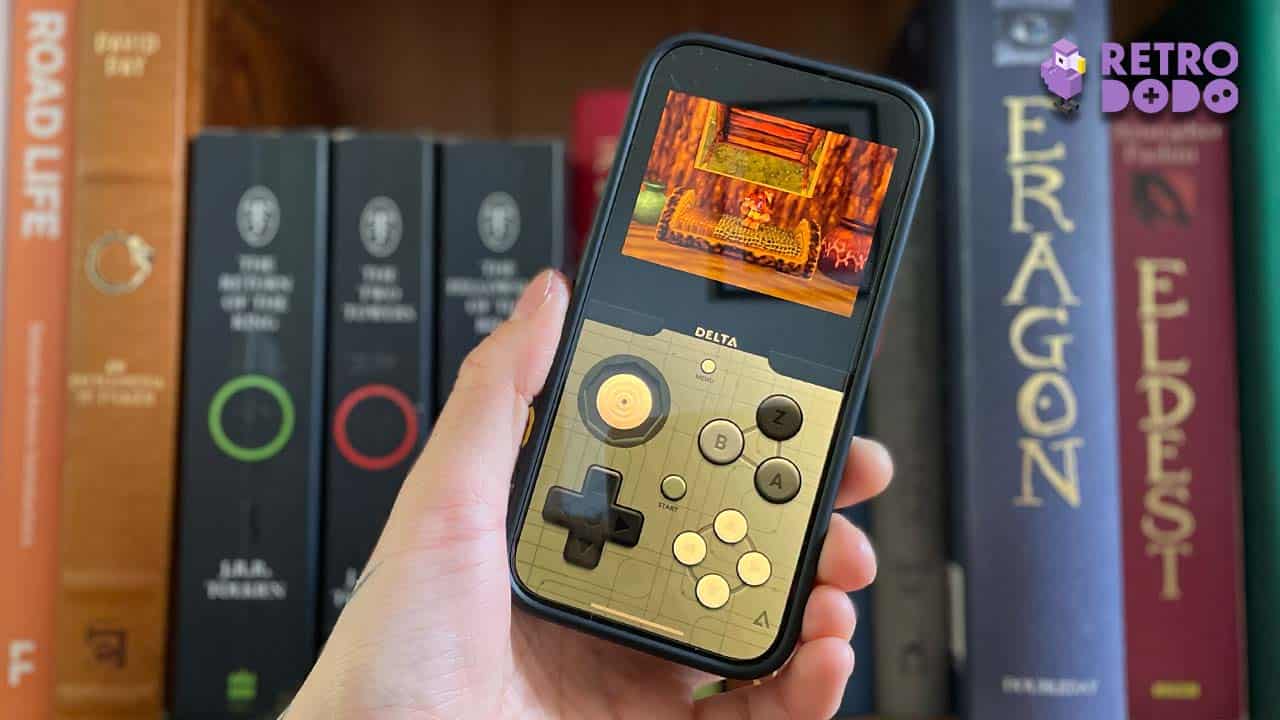
The chances are that you’ve already encountered an emulator but possibly haven’t realised it. If you’ve signed up for Nintendo Switch Online and the Expansion Pack, then you’re using an emulator every time you play old NES, SNES, N64, Sega, & Game Boy games. The same goes for if you’ve ever used MAME (multi-purpose emulation framework) to play old arcade games of the past.
Emulation is essentially a form of reproducing the actions of physical computer hardware digitally. The process allows us to play digital versions of games on multiple different devices, which also allows gamers to create their own homebrew games for us to play without actually having physical software printed on discs or made into cartridges,
How Do Emulators Work?
Emulators work by digitally recreating the innards of your favorite consoles. All those graphic chips, wires, and the other general wizardry created by our favourite gaming companies are reproduced on your computer. The programs I’ve listed below smoothly simulate (for the most part) how the physical hardware works, just without the need to actually plug a game in.
Emulators are pretty complex programs, and digitally recreating a console like the DS is no easy task. The emulators on the App Store effectively turn your mobile, tablet, or Apple TV box into a bona fide gaming console, giving everyone a way to experience the majesty of old consoles without actually having to initially fork out hundreds of dollars or pounds. Nothing will beat physical media, but when it comes to playing ROM hacks and Homebrew games, emulators allow us to experience a whole new side to the mainstream world of gaming.
Some emulators require more tinkering with than others; Delta, for example, is very straightforward and doesn’t require much messing around with when it comes to changing settings. RetroArch, on the other hand, requires users to choose cores, adapt controller settings, and has many more options for the seasoned gamer. In this next section, I’ll dive into the current emulators available on the App Store and give you a little more information about them, as well as linking to individual guides we’ve written on them if available.
The Current App Store Emulators
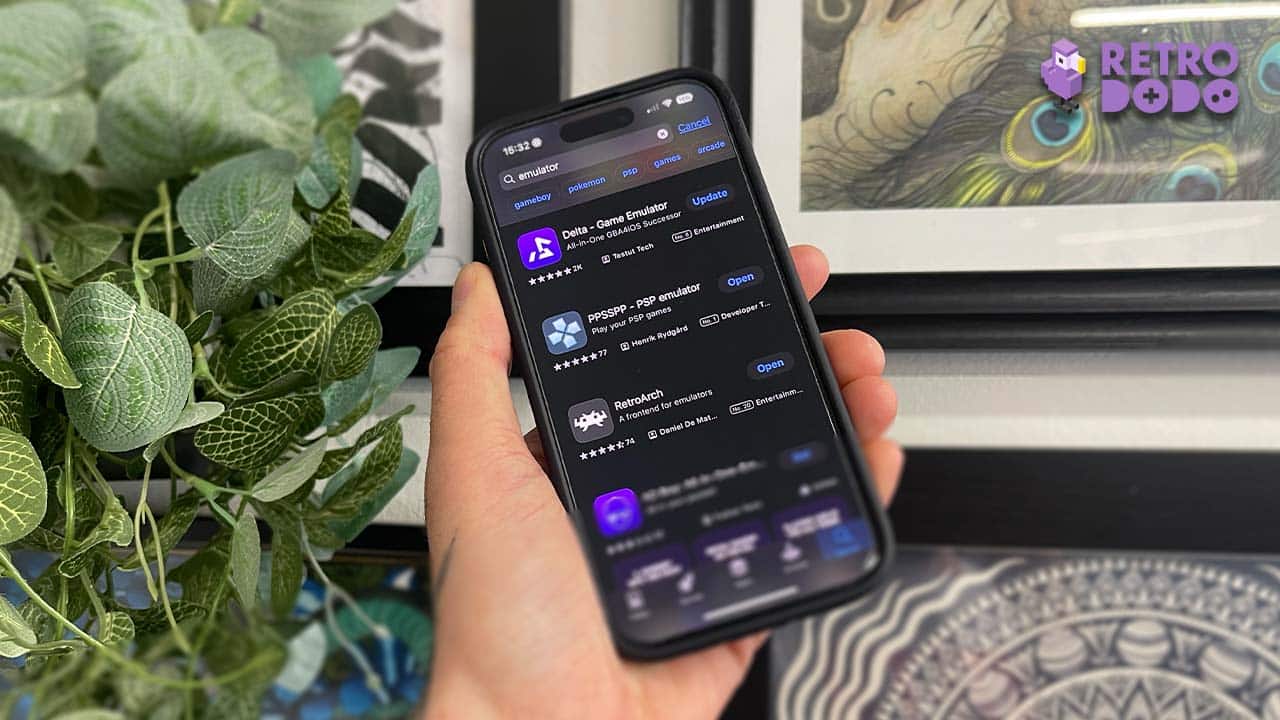
You’ve come here because you’re searching for a beginner’s guide to iPhone, iPad, and Apple TV emulators, so I should crack on with introducing you to the Apps that are out there for you to download right now.
At the time of writing, these are the current emulators available on the App Store. If you’ve signed up to our newsletter, then you’ll already know that new emulators are arriving on the App Store all the time, so we’ll be updating this list as and when each new emulator drops to keep you fully up to date.
Delta
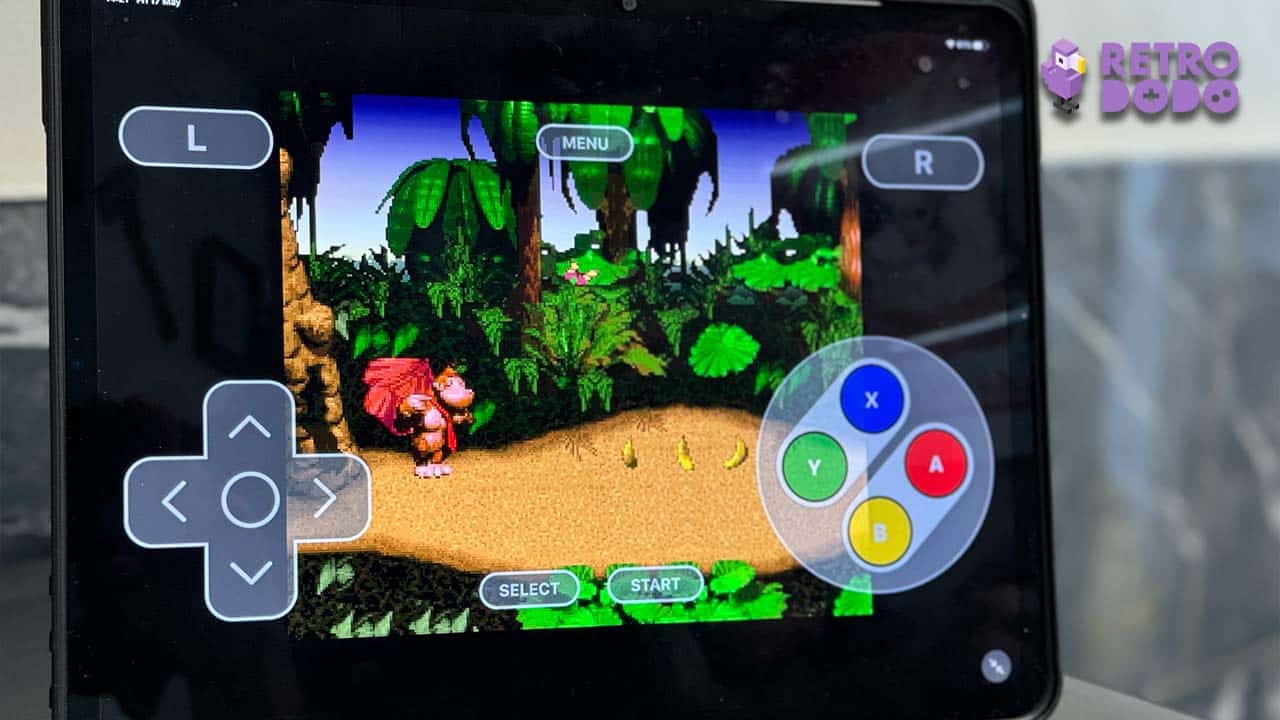
Delta is the emulator that started off the hype with iPhone users; it’s the first one of the current emulators to drop that iPhone users might have previously used through the Alt Store or by Jailbreaking (more on that later), a program that already had some gravitas before it dropped.
If you’re interested in playing old Nintendo consoles from the NES to the DS, then Delta is a one-stop-shop for all things Nostalgic Ninty related. It’s an emulator without any bells and whistles, perfect for beginners to use for playing everything from homebrew games to ROMs (of their own games, of course).
The controllers are simple to use, and it’s very easy to set up a Bluetooth controller too. You can also check out our guide on how to change skins in both horizontal and vertical mode to make your phone look exactly like an old handheld or controller.
Find out more about Delta here on Retro Dodo.
RetroArch
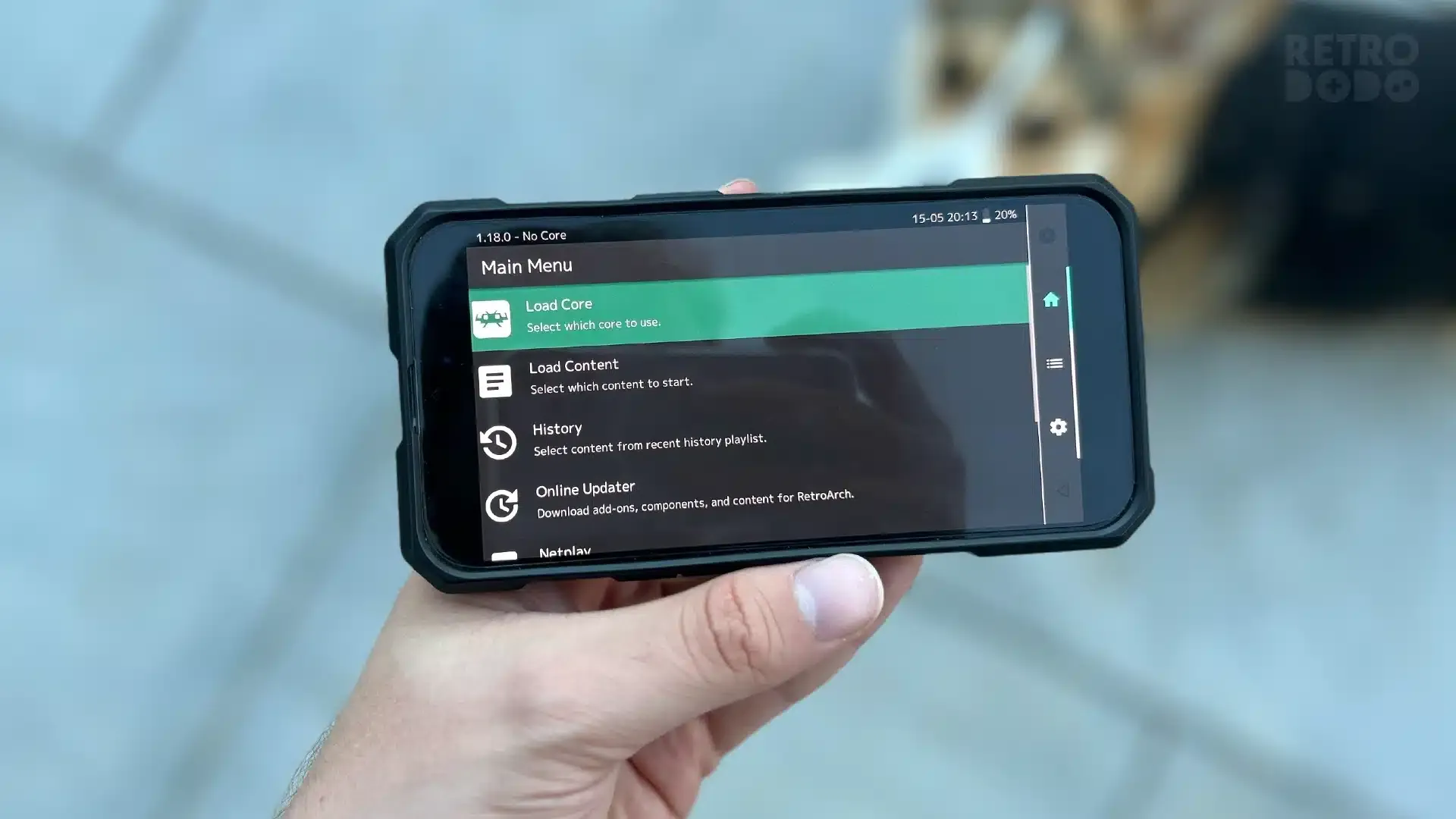
RetroArch is a jack-of-all-trades when it comes to emulation. It’s widely regarded as one of the best multi-console emulators on any device and emulates every old retro console that you can think of.
It does this by using cores, and while the interface might look a little difficult to navigate at first, it all becomes intuitive after a while as long as you have advanced knowledge of the emulation scene. It’s free, allows save/load states, and features a mode for ‘retro achievements too’.
Learn more about RetroArch in our launch article.
PPSSPP
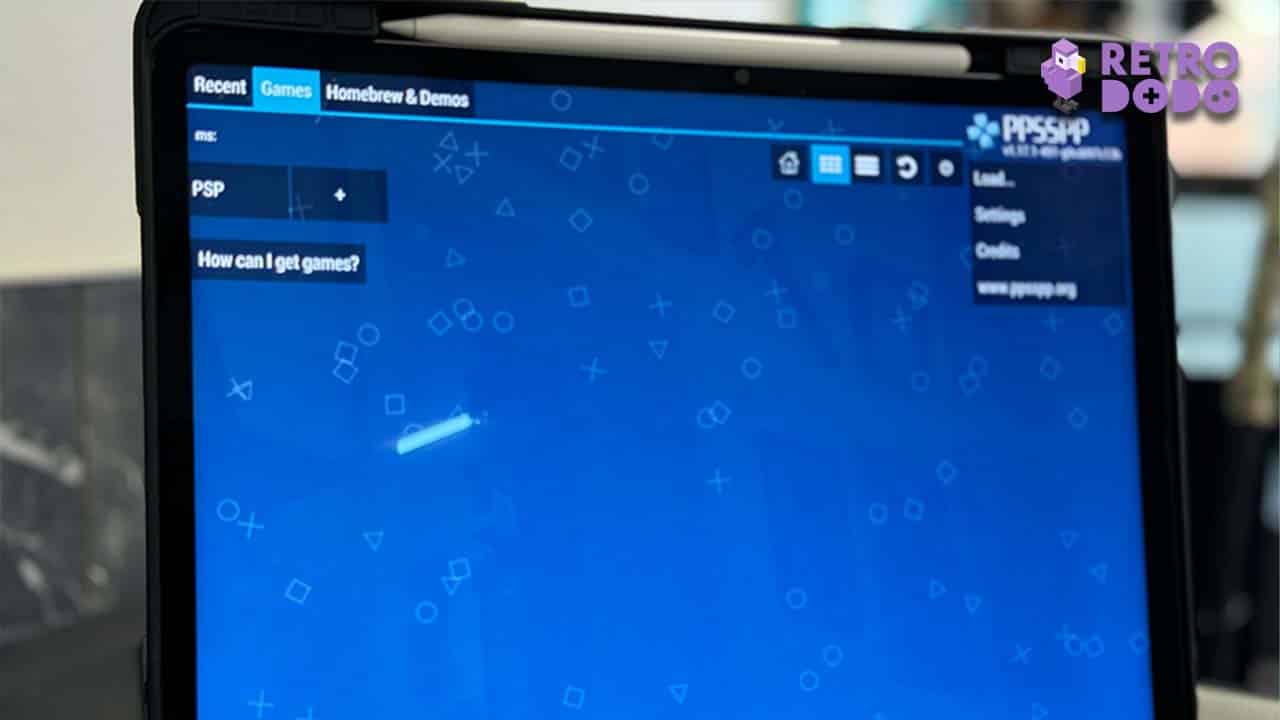
PPSSPP is another emulator that many gamers will already be familiar with. It’s an incredible emulator that not only plays all of your favourite PSP titles, but also enhances them graphically and provides a great gameplay experience. And now, it’s on iPhone and iPad!
PPSSPP is undoubtedly the best PSP emulator going; it’s used as a core or as a starting block for every other PSP emulator out there, which goes a long way to telling you how impressive it is.
Check out my news article on PPSSPP dropping for more information.
Gamma
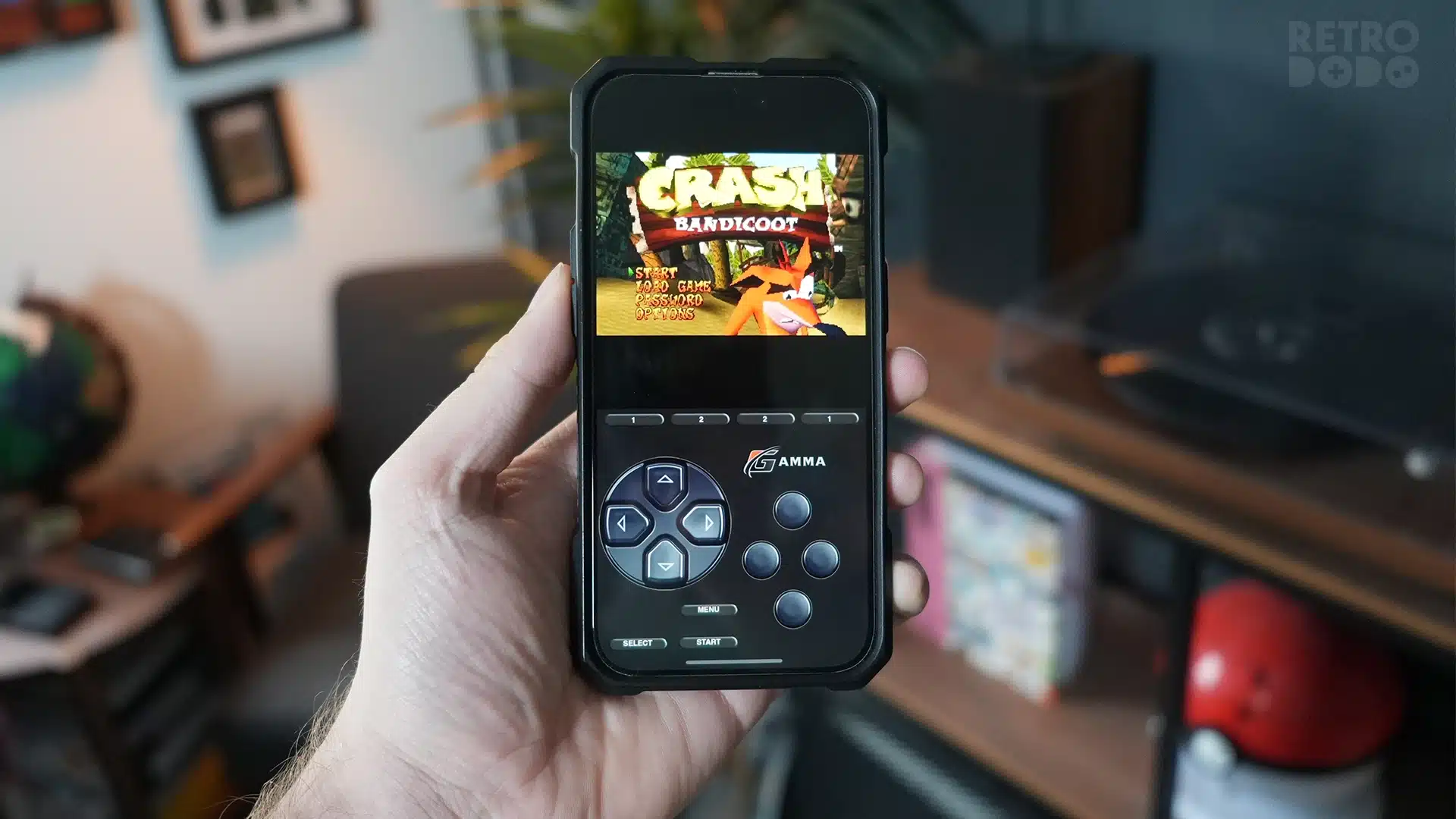
Gamma dropped just after Delta, bringing PS1 emulation to the palms of our hands. If you grew up playing titles like Crash Bandicoot and Spyro the Dragon, then this is definitely one that needs to be on your phone.
It is, however, a little convoluted to get working. The Retro Dodo team were all scratching our heads trying to get it to work at first, which is why Brandon ended up putting together a guide on how to get started with Gamma to get you gaming quickly.
Despite the initial confusing setup, players won’t need to get any BIOS files to run games. So once you do get it set up, it becomes a simple, straightforward way to play the games from your youth.
EMU 64 XL
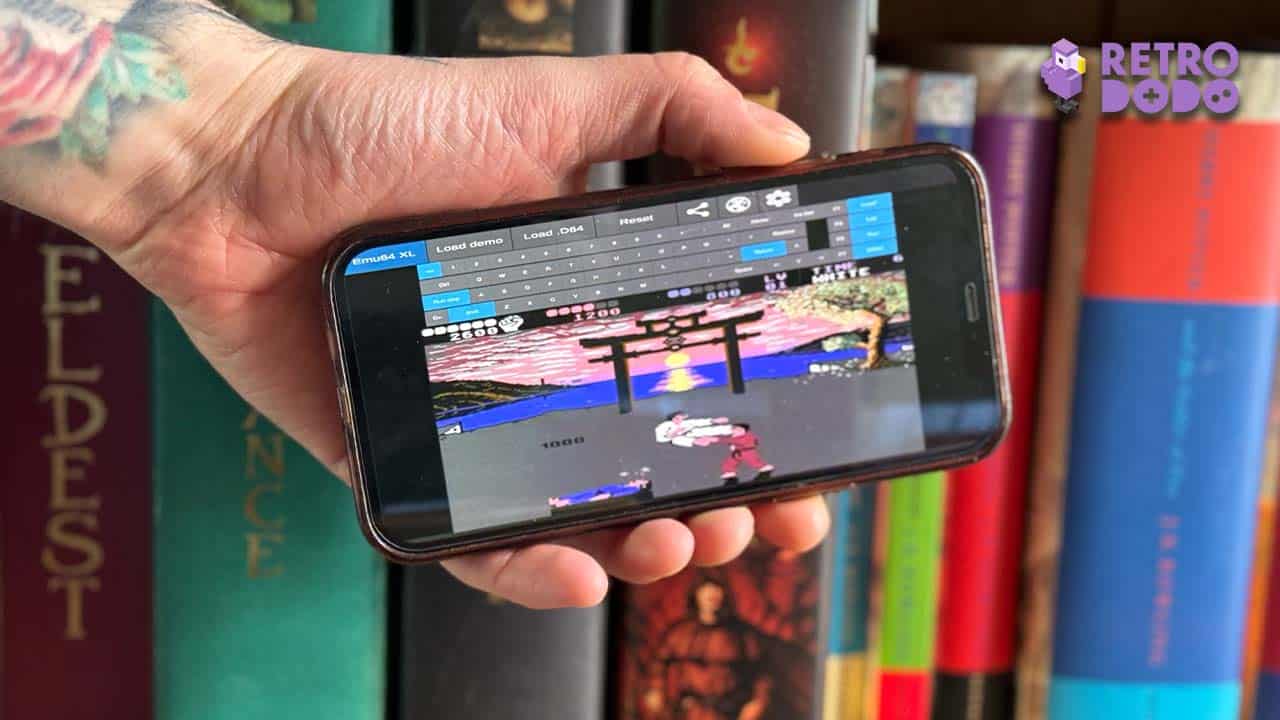
Let’s not forget to give some love to the Commodore 64 too! Emu 64 XL is a simple, fast, and easy-to-use emulator dedicated to the console that players had to set up, go out and play football for 30 minutes while it warmed up, and then come back to play their game.
If you’ve got a C64 Mini and fancy taking it out into the world with you, then Emu 64 XL allows players to smoothly recreate all their favourite games for this classic console. It also allows players to develop and play their own games too!
Provenance (Beta)
Provenance is currently in Beta mode for iPhone, iPad, and Apple TV, bringing everything from Atari 2600 to PS1 games to the mix. As it’s currently in Beta mode, it’s only available for Patreon users to download and test, but we’ll update this article with a proper listing for Provenance when it becomes available for public use.
Learn more about the Provenance Beta rollout.
The Alt Store
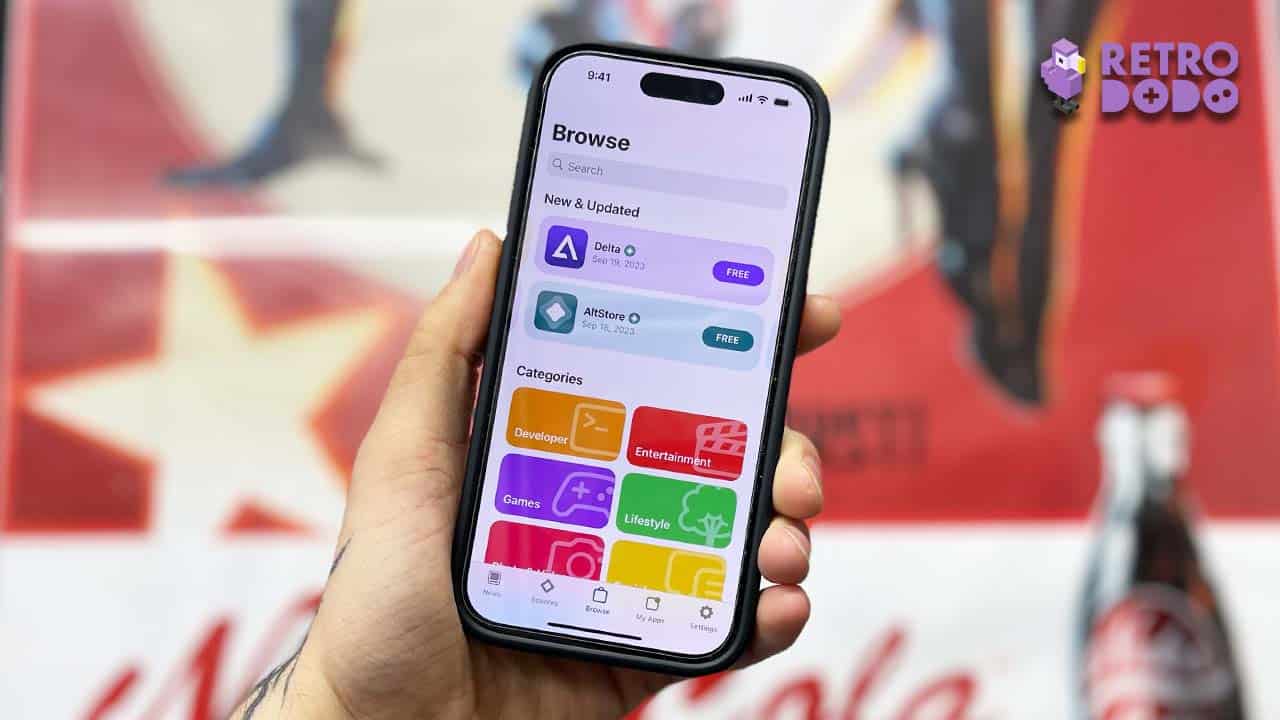
It’s worth noting that emulators were available on the iPhone before they arrived on the App Store, but they required a process called Jailbreaking which effectively ruined any kind of warranty on your iPhone. The creator of Delta, Riley Testut, sought to overcome this practice by creating the Alt Store, an alternative App Store that provides users with lots of other third-party apps that aren’t currently available on iPhone.
When Delta dropped on the App Store, Riley also announced the European arrival of the Alt Store. Users can now connect to their Mac or PC and get all the Apps from there, providing even more choice. Users can also self-publish apps on it too!
So why am I telling you this? Well, now that emulators are on the official App Store, you don’t need to worry about the Alt Store as such; I’m just letting you know that it’s here as an option if you want to take a look at the other programs on offer. The process is a little more convoluted than just heading to your existing app store, but the option is there for the inquisitive readers amongst you, and you can find out how to download the Alt Store from the official website.
The Legality Around Emulators
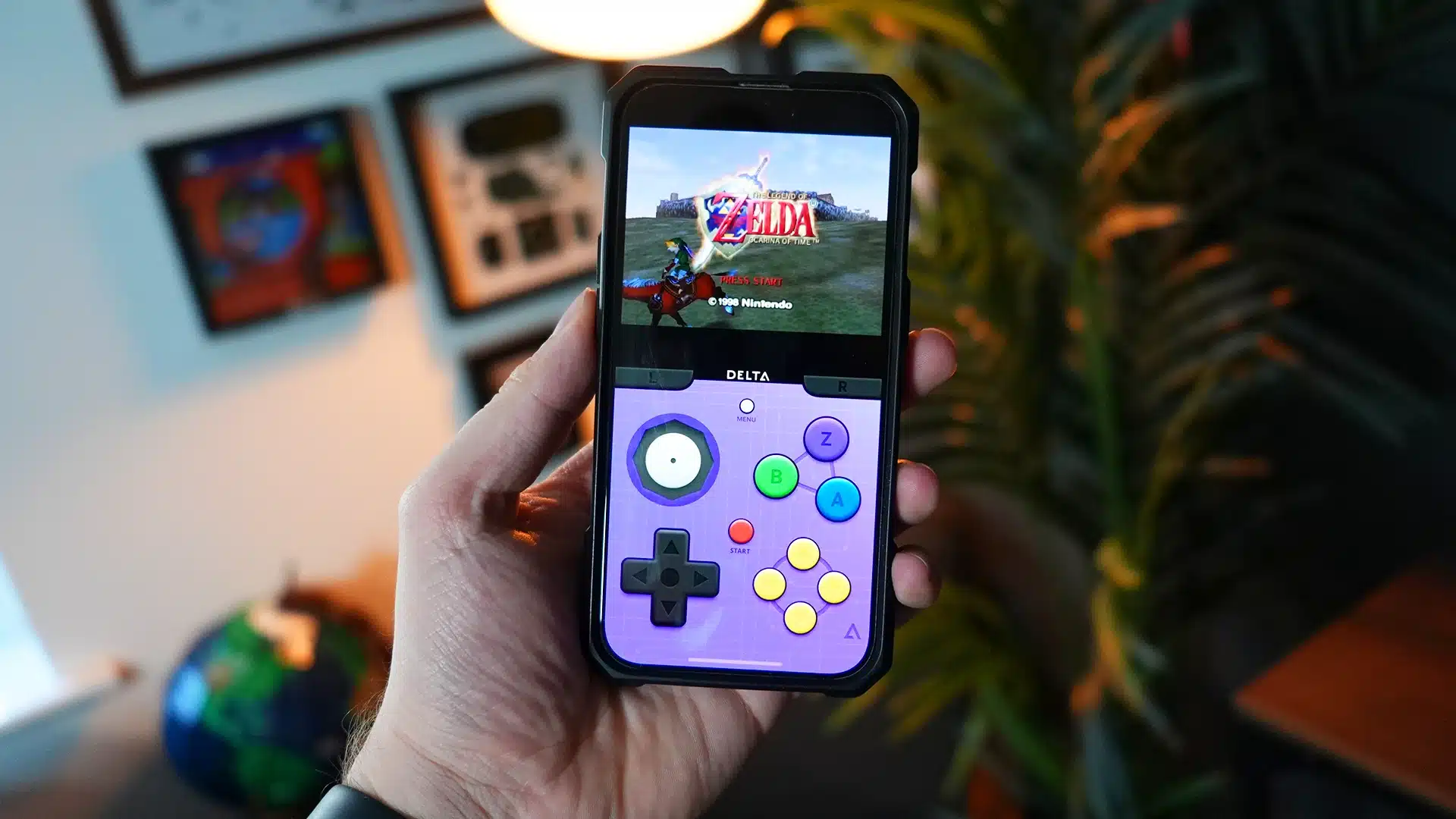
Emulators have been around for a long time and are used on many of the retro handheld gaming consoles we cover here on Retro Dodo. They’ve been available on the Google Play Store for Android users to play too, but as 21.6% of the smartphone-using population use an iPhone, it’s fair to assume that some of you might not fully know whether emulators are legal or not.
Emulators are 100% legal to download, they’re just programs like iTunes that play individual files. As you will soon discover, however, it’s the games that you play on these emulators and how they are acquired that cause contention with gaming companies.
I will say, however, that this is usually the case for console emulators that deal with games for systems that are no longer in production. Emulators for the Nintendo Switch, for example, are very much frowned upon by Nintendo; some of you might have seen our article about Nintendo suing the creators of Yuzu for $2.4 million!
Downloading Emulators
While no one program is the same once you get into the ‘fine tuning stage’, the process for downloading the emulators is fairly universal. Selecting your ROMs is simple on each program too, apart from Gamma, that is, and we’ve got a guide on how to do that up above for you!
Here’s some more information about getting emulators onto your iPhone or iPad and instructions on how to access files using Apple TV.
iPhone & iPad
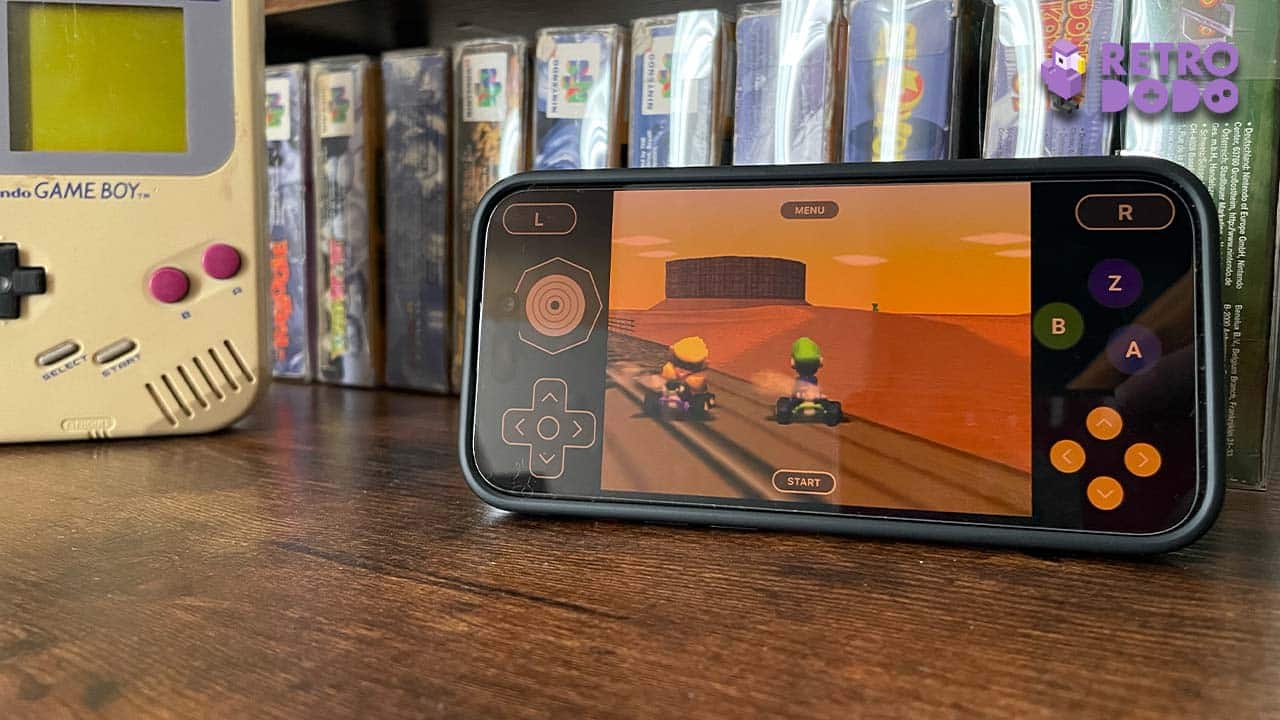
For iPhone and iPad, getting emulators onto your phone is as easy as heading to the App Store and choosing your specific emulator.
With some of the more simple emulators like Delta, you’ll simply need to locate playable files in your Downloads or Files folder, unzip them, and open them with your selected program. It’s the same process for both iPhone and iPad and is pretty much foolproof for most titles. And don’t worry, I’ll explain unzipping in a second.
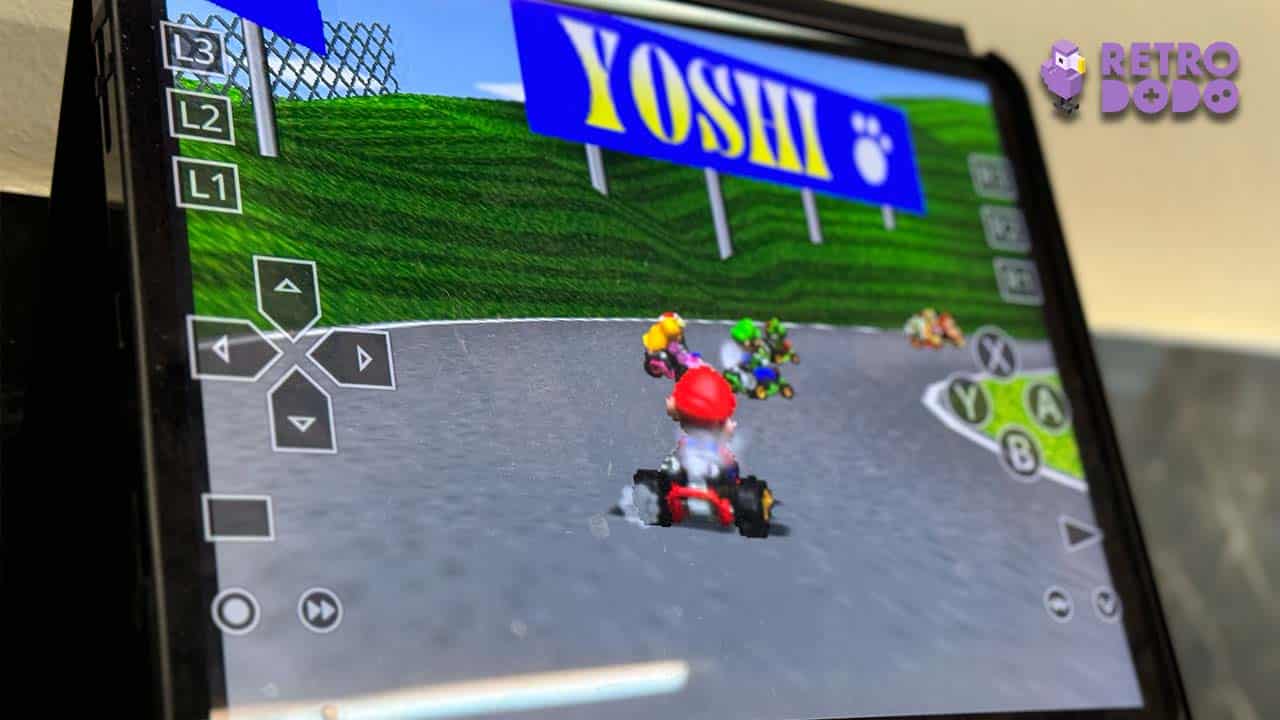
Other emulators like RetroArch require a little more tinkering to get working, giving users much more in terms of options when it comes to setting up their gameplay experience. RetroArch requires players to pick a core for a specific console. The core is essentially a digital representation of the inner workings of a console, so in a sense, you can think of RetroArch as an emulator that emulates other emulators… that’s Retro Gaming inception right there!
At the time of writing, Delta isn’t fully compatible with iPad as it doesn’t fill the entire screen, but we do know that Riley Testut is working on rolling a dedicated iPad version out ASAP.
Apple TV
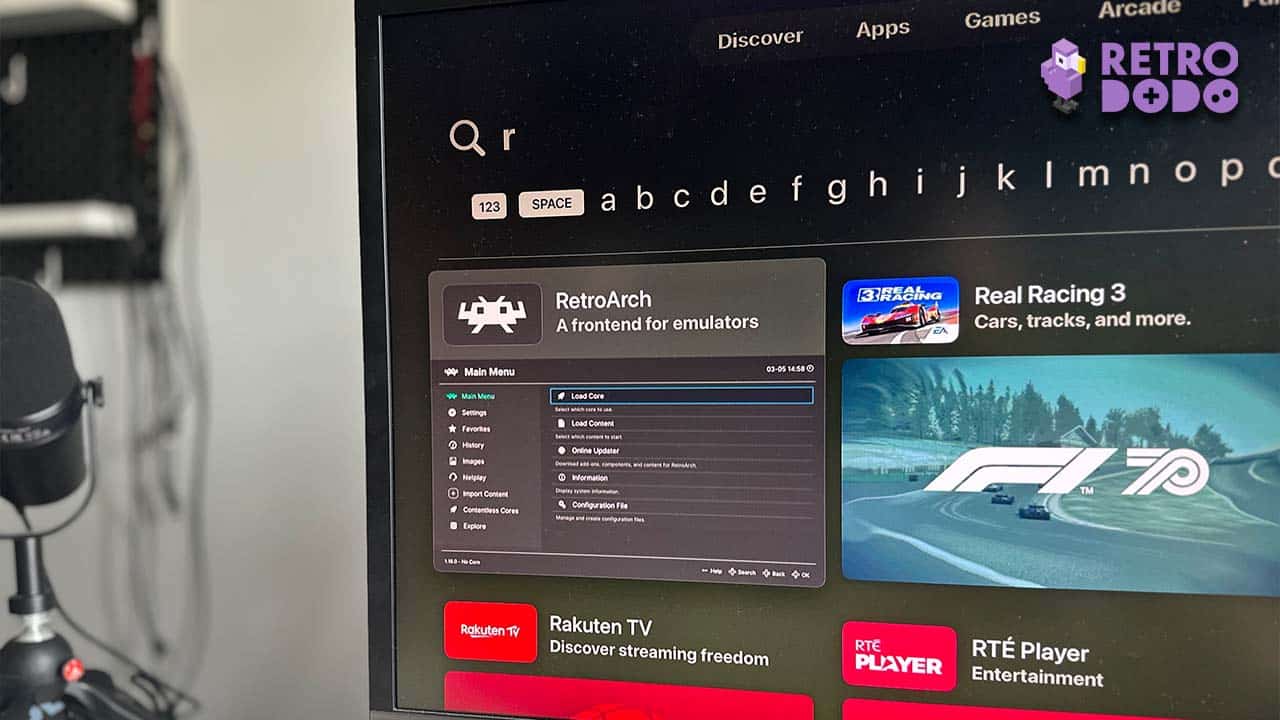
The process of getting apps onto Apple TV is no different from that of the iPhone and iPad. Users just need to head to the App Store on their TV and search for their chosen emulator. RetroArch is the current Apple TV favourite (as it’s currently the only one on the system), but navigating files is a little more difficult than on the iPhone and iPad.
For starters, you’ll need to make sure that your Apple TV box is hooked up to the internet and on the same WiFi network as your phone. This is because you’ll need to upload the files you want to play on RetroArch to a website for the emulator to access.
- Head to TV.local/link on your phone (making sure you’re on the same network as your Apple TV box).
- Find your downloads folder by following Apple TV > RetroArch – Downloads Folders.
- Upload the files that you want to play on your Apple TV, then open the RetroArch app on your Apple TV to play it.
Understanding The Different Types Of Games & File Terms
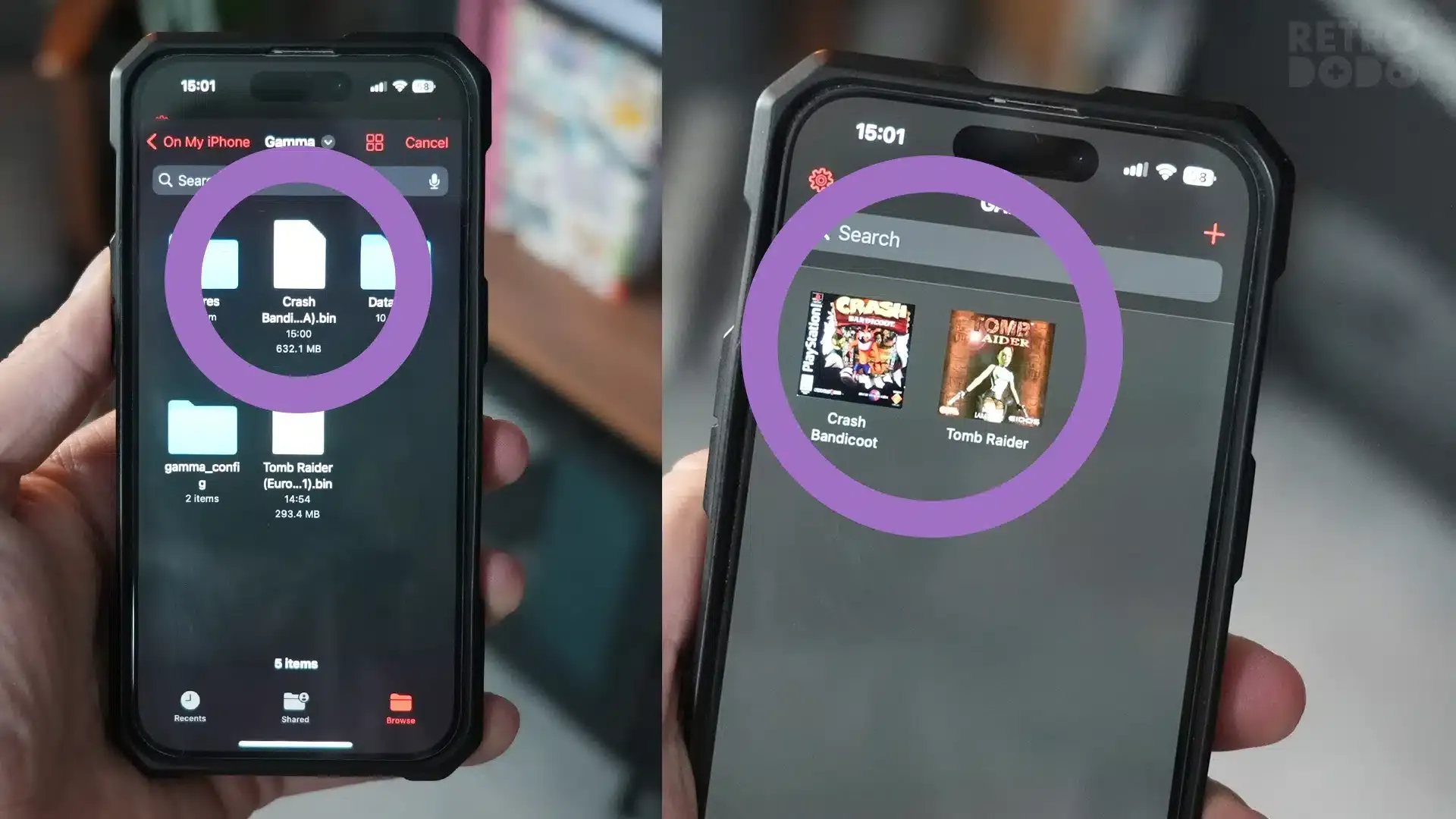
I understand that for many people, playing games on your phone or on your Apple TV box might seem like something out of a science fiction movie. And yes, I know that Android users will be laughing at this point and say that they’ve known how to do this for years, but this is a beginner’s guide after all, and there are undoubtedly people out there who don’t know their USB-C’s from the HDMI’s (Hi Mum, this is definitely you). Let’s touch a little on the different terminology behind games used with emulators so you can better understand them.
ROMs & Hacks
I’ll start off by telling you a little bit about ROMs. ROM means ‘read-only memory’, and in the context that we’re referring to in this article, they’re digital copies of video games. It’s possible to pull files from your existing games and create ROMs out of them, but the top and bottom of it all is that most companies view ROMs as being illegal. That’s the ripping of files, sharing of ROMs, and downloading of them to play. That’s the official stance, just like it was when people were taping music from the radio and CDs, and when we were all downloading music back in the day from sites like Napster and Grokster too.
ROM Hacks are manipulated versions of games, often with new content, characters, and storylines in there. Pokemon Unbound is a perfect example of a ROM Hack, a game that is that good it could well have been a mainline Pokemon title in its own right!
Homebrew Games
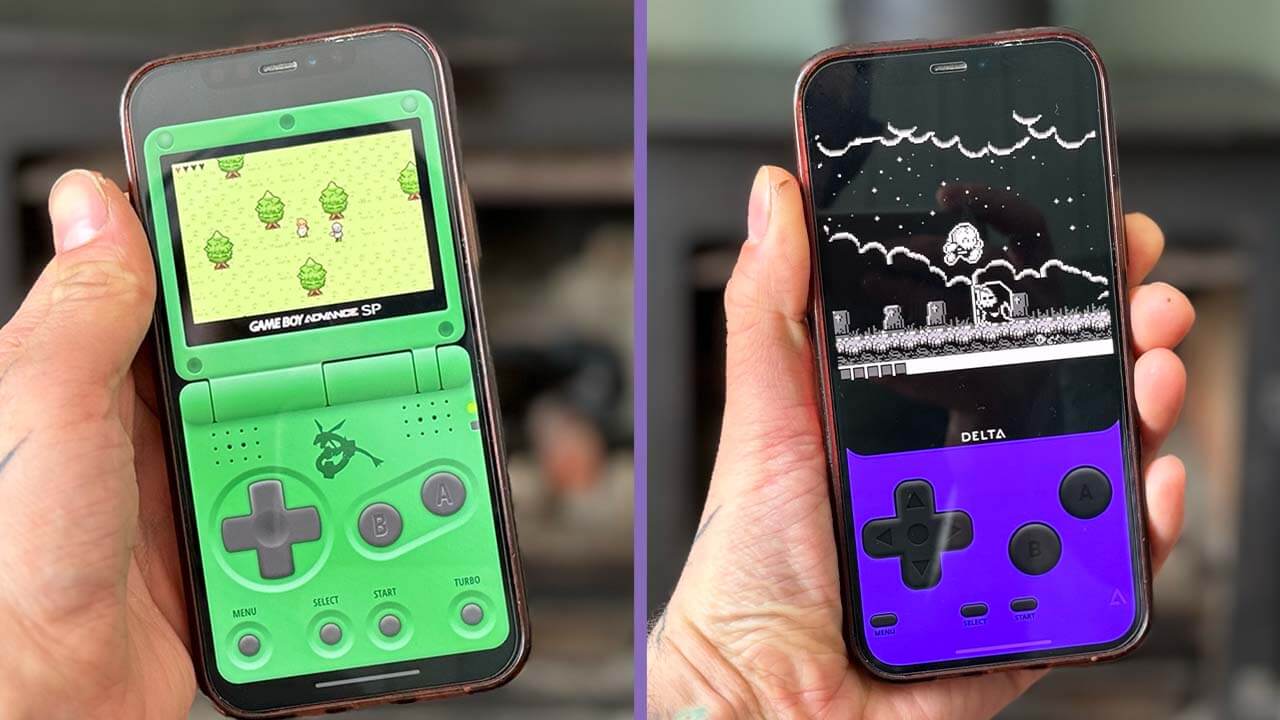
Homebrew games are titles that have been created from scratch by developers for older consoles. Sometimes, they’re put onto external cartridges for players to stick into original hardware, and other times they come in ROM form for users to play on emulators or devices like the Analogue Pocket.
As homebrew games don’t use existing assets from other titles that might breach copyright, there are no restrictions to downloading them or legal implications to sharing them. I’ve played some incredible Homebrew Games for Delta over the past couple of weeks since the App Store blew up with emulators, and while it has to be said that some have taken ‘levels of inspiration’ a little too far, there are a lot of brand new and exciting ideas out there for you to download and try out!
Check out my top picks for Homebrew Games on Delta.
Zip Files
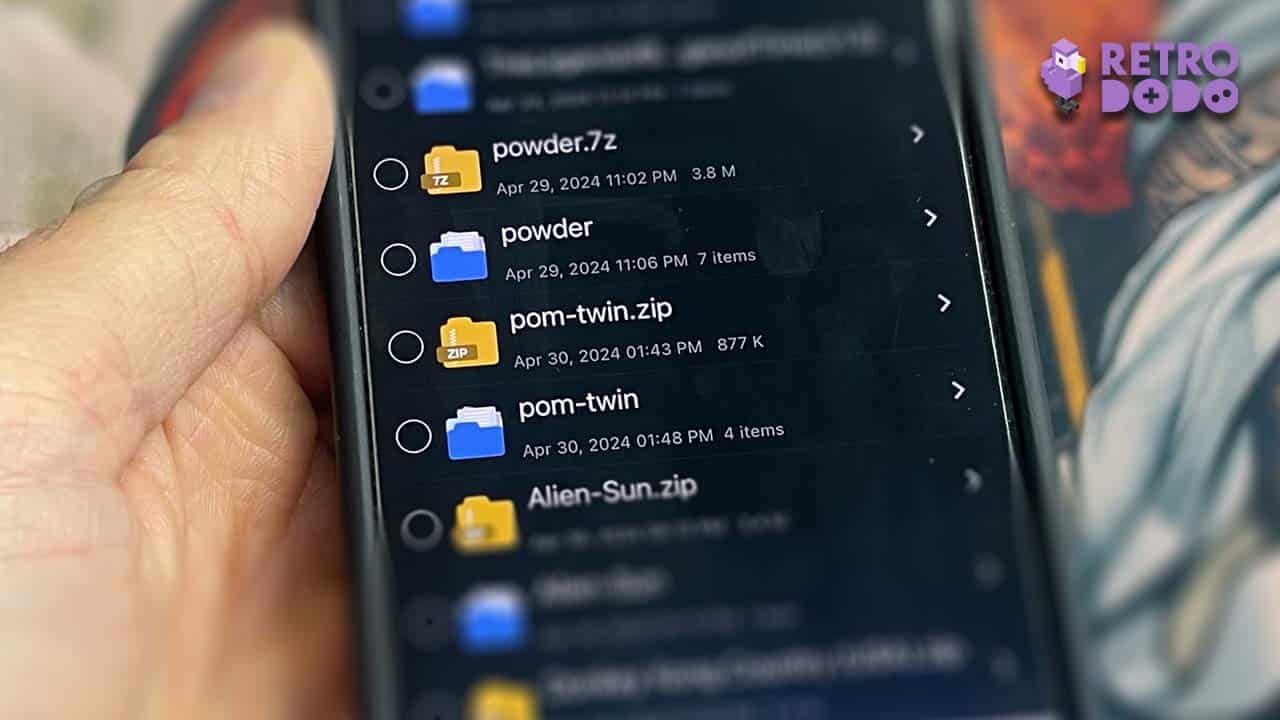
Something I found when downloading homebrew games is that you’ll need a proper program to unzip files in order to play them with your chosen emulator. If you try to open a compressed Zip file in your emulator, you’ll either get an error message or the app will close altogether.
I downloaded iZip, a free program that unzips your files and allows you to open them straight away in the appropriate emulator. You’ll find the Zip files in your downloads in your Files app. Just select your chosen file and let the app prompts guide you through the process!
Cores
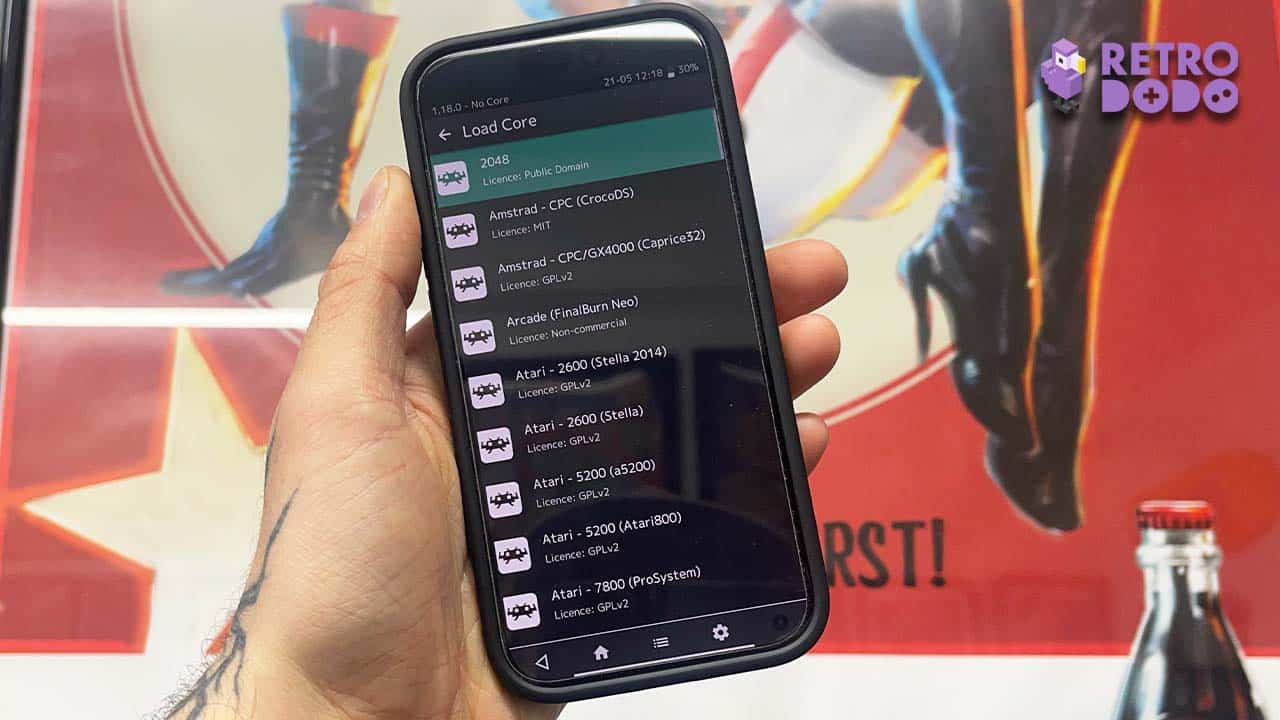
This is definitely one for the RetroArch fans out there. I’ve mentioned cores up above when talking about RetroArch, and I thought it might help for you to know a little more about them. As RetroArch is a kind of ‘home hub’ for other emulators, it runs other programs as though they were specific plugins rather than being a dedicated emulator itself.
Cores are those plugins, and you’ll need them to make your chosen emulator work. The RetroArch app comes with all the cores you’ll need from the Libretro Core Library already, but you do have the option to upload other cores that you’ve sourced yourself If you prefer. To be honest, it probably won’t be necessary for most players, but the option is there!
BIOS Files
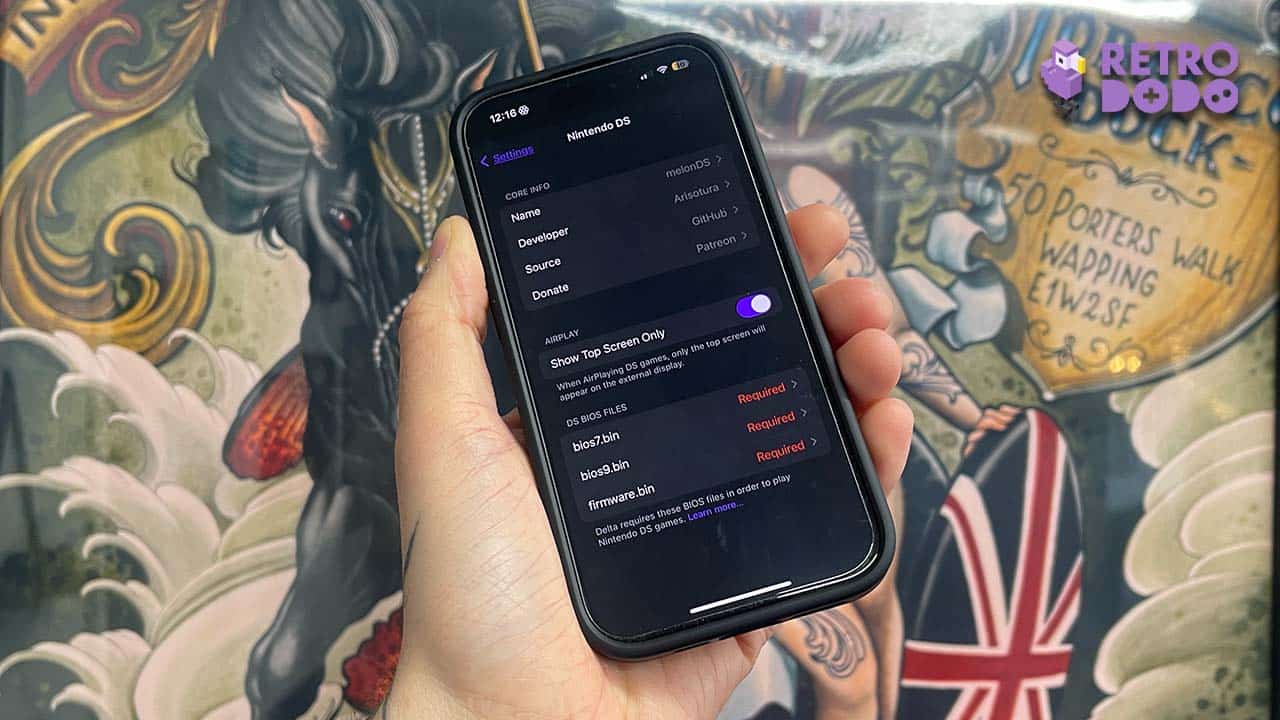
Some emulators will ask you for BIOS files, but to stay within the realms of the law, you’ll need to pull these from your own devices. BIOS stands for ‘Basic Input/Output System’ and essentially replicates an operating system that certain hardware devices need to run. Some cores and emulators require these BIOS files to run properly as you can see from the image of the Delta menu on my phone above.
Like the discussion around emulation, downloading and using other people’s BIOS is classed as illegal. If you can pull your own BIOS files from your own devices that you have bought and legally own, then the general consensus is that this practice is fine. There are plenty of ways to learn how to do this on the internet that can’t embroil us in any hot water, so have a little search to find out more.
Airplay With Delta
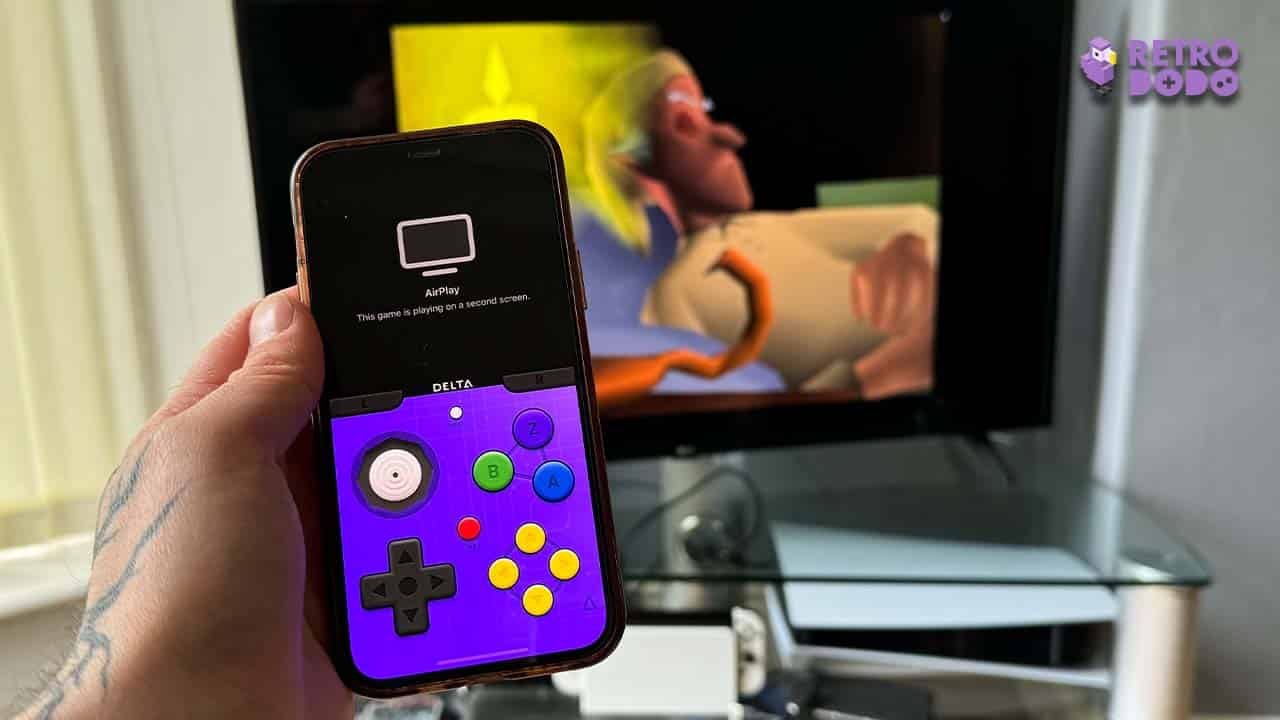
While Delta isn’t currently on Apple TV at the time of writing (something else that Riley Tesut is working on getting out as I write these words, and I’ll update this article as soon as he does), it is possible to screenshare your emulator to your TV or laptop to using Airplay. This isn’t possible on every TV and with every iPhone model, but I managed with both my iPhone 12 and now my iPhone 15 Pro using my LG 4K TV.
I will say at this point that gameplay was much smoother using my iPhone 15 Pro than it was with the iPhone 12, and it’s definitely a lot better when you’re not asking too much of your broadband connection (FaceTiming my friends and showing them gameplay on the TV meant that it was pretty laggy, but it played perfectly once I ended the call). 40 Winks played like an absolute dream, and I spent a good hour playing Banjo-Kazooie: Jiggies of Time without any lag whatsoever.
Check out my guide on how to play Delta games on your TV for more details.
Pairing Up An External Controller
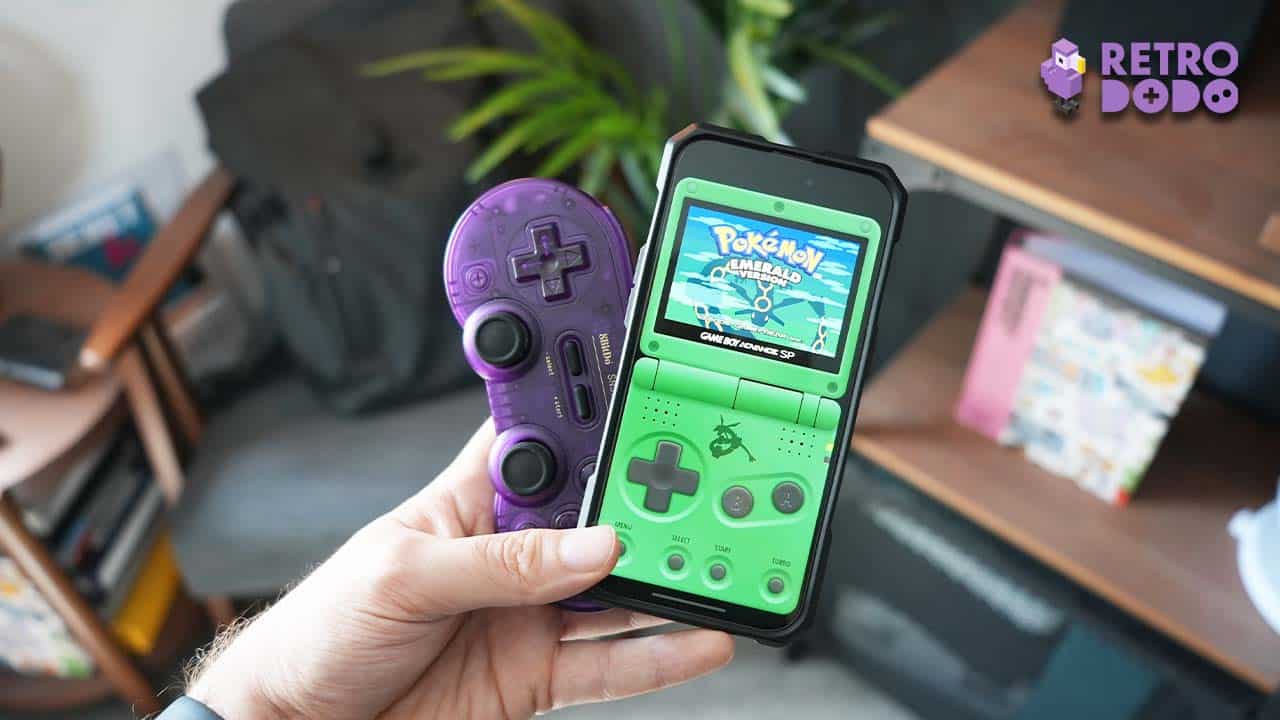
Pairing up an external controller is incredibly easy; it’s no more complicated than heading into your Bluetooth settings and searching for the controller.
- Put your chosen controller into pairing mode by pressing the allotted pairing button.
- Head into your settings and open up Bluetooth. Look down to find the name of your controller.
- Press the name of the controller and voila, you’re hooked up and ready to roll!
All emulators come with on-screen touch controls that you can use, but sometimes games call for more precision. I’ve been trying to complete a part of Banjo-Kazooie: Jiggies of Time that required me to jump along tree trunks, and it was much easier to do with an external controller hooked up. As I’ve said throughout this article, with a controller hooked up and either Airplaying to your Laptop or TV or using Apple TV, you’ve essentially got a full Retro Gaming setup!
You can either use external controllers like the Pro Controller or the 8BitDo SN30 Pro pictures above, or a dedicated mobile gaming device like the BACKBONE One Mobile Gaming Controller depending on your preferred gaming style.
And there you have it; that’s the end of my beginner’s guide! You should now have everything that you need to get playing games on your iPhone, iPad, and Apple TV box! Don’t forget to keep checking our website for more news articles about new emulators, but in the meantime, happy gaming!

